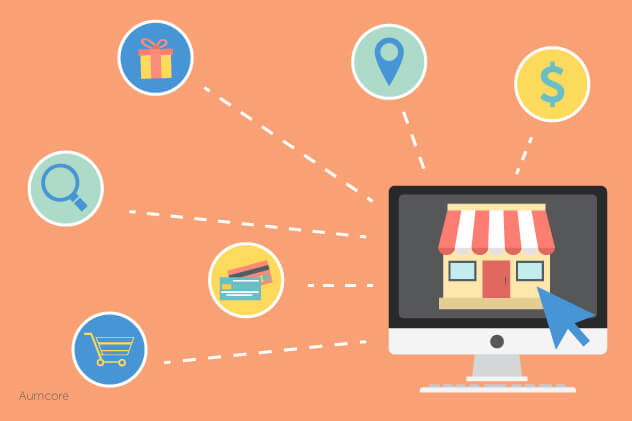The holiday season is far more than just a time for festivities and gift-giving; it’s a golden opportunity for businesses to shine and leave a significant impact on their bottom line. In this comprehensive guide to mastering holiday marketing, we’re here to help you unlock the full potential of this special time of year by delving into strategies, trends, and insights that can elevate your holiday marketing game.
Our guide unlocks the full potential of holiday marketing, offering insights into digital marketing trends that can elevate your strategy:
- 1 in 3 consumers base their holiday spending on promotions, highlighting the need for enticing offers.
- 56% research holiday products or services on social media, especially Gen Z (87%).
- Social media impacts 58% of consumers’ holiday buying decisions, with Facebook, YouTube, and Instagram leading.
- 33% of holiday shoppers wait for sales, emphasizing the importance of discounts.
- Online reviews matter, as 96% consult them for holiday decisions.
- Internet influences 8 in 10 holiday shoppers, with search engines playing a pivotal role.
Why Holiday Marketing Matters
Before we delve into the intricacies of holiday marketing, let’s talk about why it’s so crucial. The holiday season represents a peak period for consumer spending. People are in a buying mood, actively seeking gifts, decorations, and experiences that make their celebrations memorable.
Here’s why your holiday marketing game needs to be on point:
- Increased Sales: The holidays typically bring a surge in consumer spending. This is a prime time to boost your revenue and achieve your annual sales goals.
- Brand Visibility: Effective holiday marketing can elevate your brand’s visibility and create a lasting impression in the minds of your target audience.
- Customer Engagement: Engaging holiday campaigns can foster a deeper connection with your customers, turning them into loyal, long-term supporters of your brand.
- Competitive Advantage: With most businesses ramping up their marketing efforts during the holidays, staying ahead of the curve can give you a competitive edge.
Current Holiday Marketing Trends
Navigating the ever-evolving landscape of holiday marketing requires a deep understanding of consumer behavior and emerging trends. Let’s bridge the gap between these two, starting with statistics before diving into the patterns and trends on consumer behavior during the festive season.
Statistics on Consumer Behavior During Holidays
Holiday shopping behaviors can vary widely across sectors, with different products gaining popularity each year.
Here’s a snapshot of some key statistics related to various sectors and popular holiday products:
- Grocery and Beverage Stores: During the 2022 holiday season, these stores experienced a significant 7.8% growth in sales compared to the previous year.
- General Merchandise Stores: Sales in general merchandise stores saw a 3.8% increase in 2022, contributing to holiday retail sales.
- Sporting Goods Stores: Sporting goods stores also played a role, with a 3.5% increase in sales during the holiday season.
- E-commerce Categories: In 2020, the e-commerce category that saw the most significant growth was “Grocery and Beverages,” with a remarkable 216% increase in sales compared to the previous year.
- Health, Fitness, and Nutrition: This category ranked second, with nearly a 116% rise in online sales in 2020.
- Popular Gift Items: According to a September 2022 US survey, the most sought-after Christmas gifts included toys, apparel, and gift cards. Over 75% of respondents intended to purchase these items for their loved ones during the holiday season.
- Hot Holiday Products: In 2022, holiday shoppers were drawn to products like toys, games, electronics, air fryers, and gift cards, as indicated by Adobe’s research.
- Fashion and Apparel: Fashion and apparel remained the top gift category during the 2022 holiday season, with a 45% preference. This was followed by toys and games (35%) and beauty items (32%).
- Groceries, Food, and Beverages: Surprisingly, this category ranked fourth (30%), indicating a preference for practical gifts or expectations of more gatherings.
- Gift Cards and Electronics: Gift cards and electronics shared the fifth spot (28%) as popular holiday gift choices.
Insights into Seasonal Shopping Patterns and Trends
1. Holiday Shopping Trends: Starting Earlier
Holiday shopping used to be synonymous with December, but the trend is changing. Consumers are now beginning their holiday shopping earlier, especially online. This shift is driven by an increase in promotions and deals, enticing shoppers to open their wallets sooner. Cyber Week sales, in particular, have gained prominence, accounting for 8% of total holiday spending.
2. The Online Shopping Surge
Online holiday sales are on the rise, outpacing in-store shopping. Year over year, online sales have consistently grown by 1%, while in-store sales have declined by 1%. Consumers prefer the convenience of online shopping, especially for large items, where they can compare prices and have items delivered directly to their doorstep. While online sales currently make up one-third of holiday shopping, there’s considerable potential for further growth, particularly in industries like electronics and games.
3. Steady Holiday Spending in 2023
In 2022, holiday spending showed modest growth, with a 2% increase compared to the previous year. The holiday season kicked off with a surge in October, driven by early discounts and promotions. However, spending gradually slowed down as the season progressed, reaching a level similar to the previous year. Looking ahead to 2023, if economic conditions remain stable, holiday spending is expected to be in line with the figures from the previous year.
What Consumers Seek in Holiday-Related Content
Consumers are looking for content that resonates with the spirit of the season. They want content that inspires, entertains, and helps them find the perfect gifts. Focus on creating content that tells a story, showcases your products or services in a festive light, and provides value to your audience.
How to Plan Your Holiday Marketing Campaign
Planning your holiday marketing campaign should begin well in advance. Here’s a step-by-step guide:
- Set Clear Goals: Define specific, measurable goals for your holiday campaign, such as sales targets, website traffic, or social media engagement.
- Know Your Audience: Understand your target audience’s preferences and buying behavior during the holidays.
- Content Planning: Create a content calendar that outlines the type of content you’ll produce and when it will be published.
- Channel Selection: Choose the most effective marketing channels for your business, which could include email marketing, social media, pay-per-click advertising, and influencer partnerships.
- Budget Allocation: Allocate your budget strategically across different marketing channels and campaigns.
- Creative Development: Develop creative assets like holiday-themed visuals, videos, and messaging that resonate with your audience.
- Testing and Optimization: Continuously monitor and optimize your campaigns as they progress.
Top Holiday Marketing Channels
The success of your holiday marketing campaign depends on the channels you choose. Here are some top options:
- Email Marketing: Craft personalized, festive email campaigns to reach your audience directly. Learn more about holiday email marketing trends here.
- Social Media: Utilize platforms like Facebook, Instagram, and Pinterest to showcase your holiday offerings and engage with your audience.
- Content Marketing: Create blog posts, videos, and infographics that provide holiday-related value to your audience.
- Paid Advertising: Invest in paid advertising campaigns on platforms like Google Ads and Facebook Ads to reach a wider audience.
Holiday Marketing Strategies for Achieving Success
- Limited-Time Offers: Create a sense of urgency with limited-time offers, discounts, and promotions.
- Gift Guides: Curate gift guides that make it easy for shoppers to find the perfect gifts within your product range.
- User-Generated Content: Encourage customers to share their holiday experiences with your products or services through contests and hashtags.
- Mobile Optimization: Ensure that your website and marketing materials are mobile-friendly, as many shoppers use mobile devices for holiday shopping.
Holiday Marketing Success Stories
Several brands have made a mark with their holiday marketing strategies, utilizing different approaches to capture consumer attention and create lasting impressions.
John Lewis: Striking a Chord with Emotional Storytelling
John Lewis incorporated storytelling into their 2018 holiday campaign, “The Boy and The Piano.” While it was emotionally resonant, some questioned its relevance to the store. Nonetheless, the store responded to criticism gracefully, emphasizing the campaign’s intention to convey the importance of gifts beyond their material value. This campaign demonstrated that emotional storytelling remains potent, but it’s crucial not to lose sight of promoting products alongside the narrative.
Macy’s: The Tradition of Holiday Storytelling
Macy’s, with a long history of holiday storytelling through window displays, continued its tradition in 2018. Their commercial, “The Wonder of Giving,” depicted an astronaut mother separated from her family, emphasizing the emotional connection of gift-giving. Another ad showcased a heartwarming moment with a young girl’s macaroni necklace transformed into a real diamond one. Macy’s shows that storytelling is timeless and resonates with audiences.
Starbucks: Controversy as a Marketing Tool
Starbucks cleverly utilized controversy surrounding their annual holiday-themed cups. In previous years, controversies arose over religious symbols, unity messages, and alleged agendas. In 2018, Starbucks opted for traditional cup designs but stirred attention with a limited edition cup that offered discounts on winter drinks. The cups sold out quickly, showing that controversy can generate buzz. Starbucks managed to keep its brand in the spotlight without divisive issues.
KLM Royal Dutch Airlines: Creating an Emotional Connection
KLM Royal Dutch Airlines adopted experiential marketing by setting up a “bonding buffet” at Schipol Airport in the Netherlands during the holiday season. The airline aimed to encourage interaction among travelers. Passengers filled the seats around the suspended table, which gradually descended to reveal a holiday meal, fostering camaraderie and memorable moments. KLM’s approach showcased the power of experiential marketing to create meaningful connections.
Common Holiday Marketing Mistakes and How to Avoid Them
- Ignoring Mobile Shoppers: With the growing use of smartphones, neglecting mobile optimization is a big mistake. Make sure your website and emails are mobile-responsive.
- Overlooking Post-Holiday Engagement: The holiday season doesn’t end on December 25th. Continue engaging with your customers and offer post-holiday promotions to maximize your ROI.
- Ignoring Social Proof: Customer reviews and testimonials can be powerful tools during the holiday season. Showcase them prominently on your website and in your marketing materials.
Wrapping Up Your Holiday Marketing Campaign
As the holiday season winds down, it’s essential to wrap up your campaign effectively:
- Evaluating Your Overall Success: Analyze the performance of your holiday marketing efforts against your predefined goals. Take note of what worked and what didn’t. This evaluation will help you refine your strategy for the next holiday season.
- Collecting Feedback and Planning for the Next Holiday Season: Solicit feedback from your team and customers. What did they like about your holiday campaign, and what could be improved? Use this feedback to inform your strategy for the next holiday season.
Key Takeaways: Recap of Essential Holiday Marketing Insights
In this comprehensive guide, we’ve explored the importance of holiday marketing, current trends in consumer behavior, content preferences, and the steps to plan a successful holiday marketing campaign. Remember to stay flexible, creative, and customer-centric in your approach. By mastering holiday marketing, you’ll not only boost your sales but also create lasting connections with your audience, ensuring a brighter future for your business.
Happy holiday marketing!





Tell us your thoughts in the comments